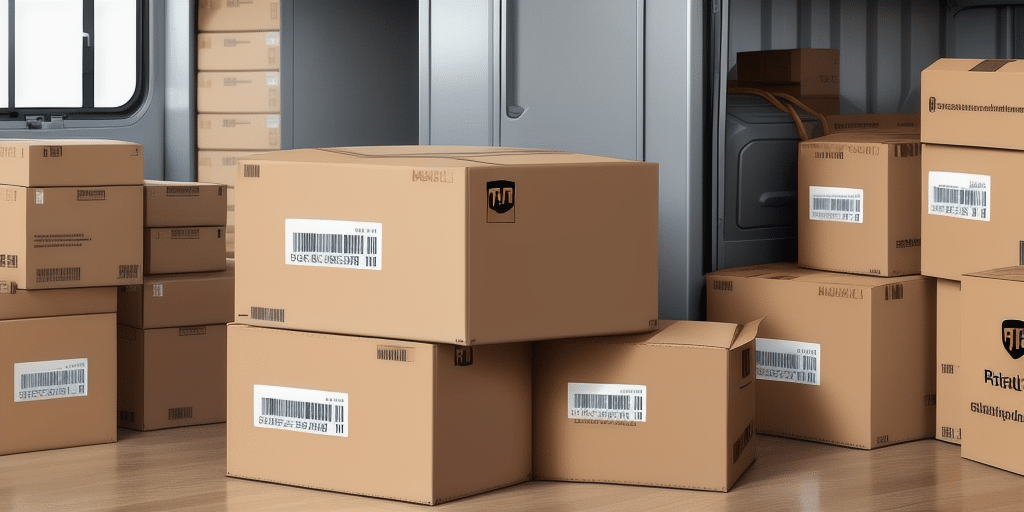Introduction to Custom Labels in FedEx Ship Manager
Efficient shipping processes are crucial for business success, and custom labels in FedEx Ship Manager offer a streamlined solution. Custom labels enable businesses to personalize their shipping labels with essential information such as order numbers, product descriptions, and branding elements. This guide provides an in-depth analysis of utilizing custom labels in FedEx Ship Manager to enhance your shipping operations.
What Are Custom Labels?
A custom label is a personalized shipping label tailored to include specific information relevant to your business needs. Unlike standard labels, custom labels allow the inclusion of details like order numbers, product information, and your company logo. This personalization not only distinguishes your packages but also facilitates better tracking and management of shipments.
Incorporating branding elements on shipping labels enhances brand recognition and fosters customer loyalty. Professional and cohesive labeling can build trust, making customers more likely to return for future purchases.
Benefits of Using Custom Labels in FedEx Ship Manager
- Enhanced Tracking: Custom labels with order numbers and product details simplify tracking and managing shipments.
- Brand Recognition: Including your logo and branding elements on labels reinforces your brand identity.
- Reduced Errors: Comprehensive information on labels minimizes the risk of shipping errors and delays.
- Time Efficiency: Streamlined labeling processes save time by consolidating necessary information onto a single label.
According to a TradeGecko report, businesses that utilize custom branding on their packages see a 30% increase in brand retention among customers.
How to Create and Customize Custom Labels in FedEx Ship Manager
Creating a custom label in FedEx Ship Manager involves a series of straightforward steps:
- Log In: Access your FedEx Ship Manager account and navigate to the "Create a Shipment" section.
- Select Shipment Details: Enter the package type, weight, and quantity.
- Access Label Options: Scroll to the "Label" section and click on "Options."
- Choose Custom Label: Select the "Custom Label" option and click "Edit" to begin customization.
- Customize Your Label: Add necessary information such as order numbers, product details, and your company logo.
- Review and Save: Ensure all information is accurate, then save your custom label.
- Print and Ship: Review the final label and proceed to print and ship your package.
Implementing custom labels ensures that all pertinent information is readily available, reducing the likelihood of shipping delays and enhancing customer satisfaction.
Types of Custom Labels in FedEx Ship Manager
FedEx Ship Manager offers various types of custom labels to cater to different shipping needs:
- Standard Labels: Include basic shipping information such as sender and receiver addresses.
- Customized Labels: Allow additional details like order numbers and product descriptions.
- International Labels: Incorporate necessary information for international shipments, including customs declarations.
- Thermal Labels: Designed for use with thermal printers, suitable for high-volume shipping operations.
Choosing the appropriate label type based on your shipping requirements can significantly improve operational efficiency and accuracy.
Best Practices and Tips for Using Custom Labels
- Limit Information: Include only essential information to maintain label clarity.
- Readable Fonts: Use clear and legible fonts to ensure information is easily readable.
- Accurate Details: Ensure all package details, such as weight and dimensions, are correctly listed.
- Consistent Branding: Maintain consistent branding across all labels to reinforce brand identity.
Adhering to these best practices ensures that your custom labels are effective and professional, enhancing both operational efficiency and customer perception.
Common Mistakes and Troubleshooting
While custom labels offer numerous advantages, certain common mistakes can hinder their effectiveness:
- Overcrowded Labels: Including too much information can make labels cluttered and difficult to read.
- Poor Font Choices: Using small or decorative fonts can reduce readability.
- Missing Details: Omitting essential information like package weight can cause shipping delays.
- Incorrect Printing Options: Selecting inappropriate printing methods can result in labels that are hard to scan or read.
To troubleshoot issues with custom labels, ensure all necessary information is included, verify font readability, and confirm that printing settings match label specifications. If problems persist, contacting FedEx Customer Support can provide additional assistance.
Advanced Features and Integrations
FedEx Ship Manager offers advanced features that enhance the functionality of custom labels:
- Barcode Integration: Adding barcodes to labels facilitates efficient tracking and scanning of shipments.
- Bulk Label Creation: Generate multiple labels simultaneously, saving time for high-volume shipments.
- E-commerce Integration: Seamlessly integrate with platforms like Shopify and WooCommerce to automate label generation based on order information.
Leveraging these advanced features can further optimize your shipping process, reducing manual effort and minimizing errors.
Conclusion
Custom labels in FedEx Ship Manager are a powerful tool for enhancing your shipping operations. By personalizing labels with essential information and branding elements, businesses can improve tracking accuracy, strengthen brand recognition, and streamline their shipping processes. Implementing best practices and utilizing advanced features ensures that you maximize the benefits of custom labels, ultimately contributing to increased efficiency and customer satisfaction. For more information on managing your shipments effectively, refer to the FedEx Shipping Management resources.






















